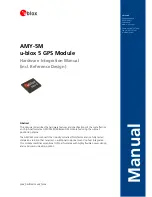
TM106601_(7/01) FMvi
USE OR DISCLOSURE OF DATA CONTAINED ON THIS PAGE IS SUBJECT TO THE
RESTRICTION ON THE TITLE PAGE OF THIS DOCUMENT
.
C
O M M A N D
S
Y S T E M S
D
I V I S I O N
INSTALLATION MANUAL
RDR-1600 WEATHER RADAR SYSTEM
AC 43-14 2/24/77
or more plastic skins separated by a dielectric core. The core may consist of honeycomb plastic
section, hollow flutes, or foam plastic. The dielectric and separation of the skins will depend
upon the wavelength of the radar frequency or frequencies.
5.
RADOME DAMAGE. Probably the most frequent damage to radomes is holes in the structure
caused by static discharges. These can be large holes that are readily apparent, or small pin
holes that are almost imperceptible. Any hole, regardless of size, can cause major damage to a
radome since moisture can enter the radome wall and cause internal delamination. If the
moisture freezes, more serious damage may occur. If enough moisture collects, the radiation
pattern will be distorted and the transmitted signals and return echoes seriously attenuated.
Ram air through a hole can delaminate and break the inner surface of the radome and result in
separation of the skins or faces of the material from the core, weakening the radome structure.
Other types of damage are characterized as dents and scratches caused by impact with stones
and birds and improper handling of the radome when it is removed for maintenance of the radar
antenna. This type of damage is easily found by inspection.
6.
MAINTENANCE.
a.
High performance radar radomes are very precisely constructed and sometimes the
slightest change in their physical characteristics, such as excessive layers of paint, can
adversely affect radar system performance. All repairs to radomes, no matter how minor,
should return the radome to its original or properly altered condition, both electrically and
structurally. The performance of proper maintenance to precision radomes requires special
knowledge and techniques and the use of proper tools and materials. An improper minor
repair can eventually lead to an expensive major repair. A radome having undergone major
repairs should be tested to ascertain that its electrical properties have not been impaired.
The testing of radomes requires test equipment that usually is found only in repair facilities
specializing in radome maintenance. Even minor repairs may affect one or all of the
following:
(1)
Transmissivity. Which is the ability of a radome to pass radar energy through it.
(2)
Reflection. Which is the return or reflection of the outgoing radar energy from the
radome back into the antenna and waveguide system
(3)
Diffraction. Which is the bending of the radar energy as it passes through the radome.
b.
These electrical properties, when altered by improper repair, may cause loss of signal,
distortion and displacement of targets, and can clutter the display to obscure the target. Poor
radome
Page 2 Par 4









































